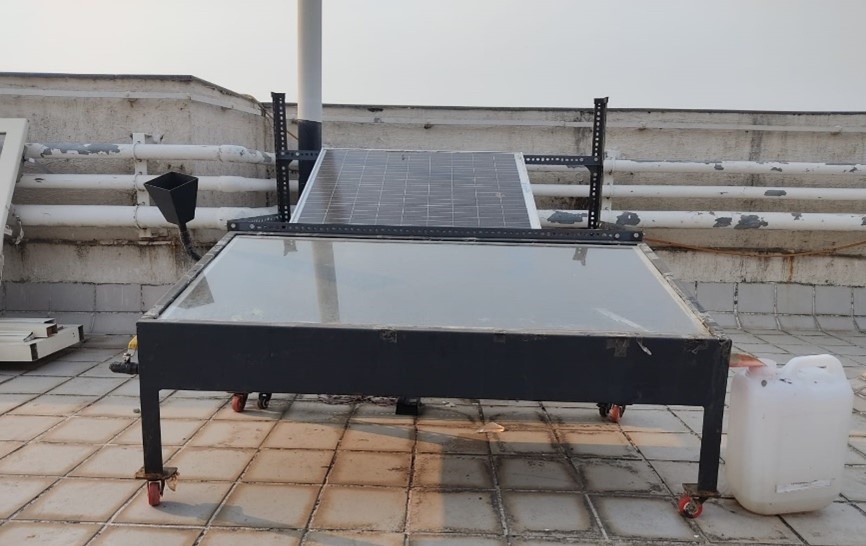This invention used the laser-induced graphene (LIG) based Joule heaters for efficient water evaporation. It addresses limitations of solar-driven interfacial evaporation - dependency on sunlight intensity and issues with salt deposition. It Investigates the impact of voltage on evaporation rates and benefits of stacking Joule heaters.
Stacked heaters significantly enhance evaporation rates and reduce spatial footprint and thermal losses. This technology achieves up to 5 kg/m²/h evaporation rate at 10V, performs effectively even with seawater and exhibits self-cleaning properties to prevent salt buildup. The solution proposes a compact, efficient system for both small- and large-scale applications, integrating renewable energy sources.
Water scarcity is a critical issue affecting millions globally, with existing desalination technologies being inefficient, costly, and dependent on inconsistent solar energy. There is a need for a reliable and efficient water evaporation system that can operate effectively under varying environmental conditions to provide a sustainable solution for clean water generation.
- Container-Based System: This innovation is a liquid vapor generation system in a container, that uses an insulator member (foam or polyester sponge) and a wick (folded tissue paper).
- Dual Heating Mechanism: It combines Joule heating and solar energy, enabling effective water evaporation under varying environmental conditions.
- Stacked Heaters: The innovative stacked heater design significantly enhances evaporation rates compared to single-layer systems. Multiple heaters are stacked on the wick, made from single or double- sided filters, and powered by an electrical source to control evaporation rate based on liquid weight loss.
- Laser-Induced Graphene (LIG): It utilizes LIG for efficient, localized heating, a novel application in water treatment.
- Stacked Configuration: It includes various configurations like SLIG (Single Laser- Induced Graphene), LILI (LIG-Insulator-LIG-Insulator) double stacking, LIIL (LIG- Insulator-Insulator-LIG) double stacking, DLIG (Double-sided Laser-Induced Graphene), and LILILI (LIG-Insulator-LIG-Insulator-LIG-Insulator) triple stacking for enhanced performance.
- Conductive Filters: The filters are coated with conductive materials such as LIG, carbon cloth, or thin-film electrically conductive surfaces, created using specific laser techniques.
- Single-Sided Filter Fabrication: Single-sided filters are made by lasing one side with a CO2 laser system.
- Double-Sided and Metal-Doped Filters: Double-sided filters are created by casting a thin PES film and lasing both sides, and metal-doped filters made by incorporating nanoparticles into a polymer solution and lasing.
- Self-Cleaning Property: It exhibits good salt resistance and self-cleaning capabilities, reducing maintenance in high-salinity environments.
- Adjustable Heating Power: It allows fine-tuning of Joule heating to compensate for solar intensity variations, ensuring consistent performance.
- Materials: UP10 membrane, foam, tissue paper, PES polymer, copper tape
- Fabrication: LIG filters made using CO2 laser, JH created with copper tape
- Characterization: SEM, Raman, XPS, Contact Angle, Resistance, Temperature
- Joule Heating: Evaporation rate tested with different voltages, stacking configurations
Early prototype is under development.
6
The system enhances water accessibility by providing clean water in regions facing scarcity. It supports environmental sustainability through the use of renewable energy sources for sustainable water treatment processes. Additionally, it promotes cost-effective healthcare by reducing expenses through efficient sterilization methods.
- Healthcare: Provides efficient steam-based sterilization of medical equipment
- Desalination Plants: Enhances seawater desalination efficiency
- Wastewater Treatment and Pollution Control: Improves industrial and municipal wastewater management
- Power Generation: Boosts steam generation efficiency in power plants
Geography of IP
Type of IP
202121056269
434993

